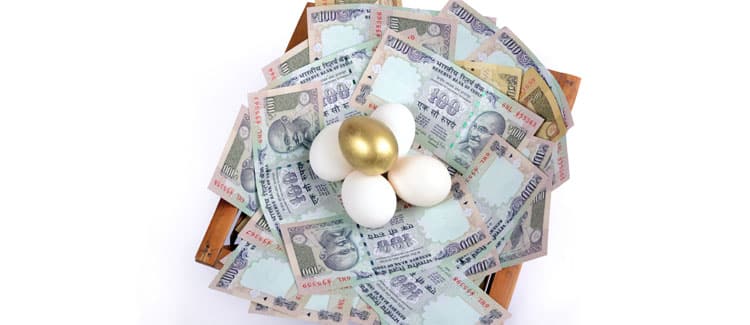Tax Planning-Know about Income Tax Saving
Savings on taxes is a very important aspect of financial planning. An individual showing keen interest to calculate their income tax always benefits themselves by maintaining their savings ratio in today’s crucial and uncertain times. Tax planning is a continuous process and one has to do it every year as their own income changes and due to government regulations as well.
An individual must understand few income tax basics which will help them ascertaining income tax liability and further in tax saving as well.
Income tax Slab
An income tax slabs are different for males, females and senior citizen who are income tax assesses. Below are current tax slabs whose information is very necessary for an individual as it determine the category of tax rate you fall under and rate of tax which will be charged on your taxable income.
1) In Case of General Assesses (Both Male & Female):
| Income Bracket | Rate |
| 0 to Rs. 2,00,000 | 0 % |
| Rs. 2,00,001 to Rs. 5,00,000 | 10 % |
| Rs. 5,00,001 to Rs. 10,00,000 | 20 % |
| Above Rs. 10,00,000 | 30 % |
2) In Case of Senior Citizens (Age above 60 years but below 80 years):
| Income Bracket | Rate |
| 0 to Rs. 2,50,000 | 0 % |
| Rs. 2,50,001 to Rs. 5,00,000 | 10 % |
| Rs. 5,00,001 to Rs. 10,00,000 | 20 % |
| Above Rs. 10,00,000 | 30 % |
3) In Case of Very Senior Citizens (Age 80 years and above):
| Income Bracket | Rate |
| 0 to Rs. 5,00,000 | 0 % |
| Rs. 5,00,001 to Rs. 10,00,000 | 20 % |
| Above Rs. 10,00,000 | 30 % |
Income Tax Exemptions
Income tax exemptions refer to those incomes which are not taxable at the time of calculating income tax. An individual irrespective of the gender has exemption limit of up to RS two lacs i.e. a person is levied no tax up to this amount. A senior citizen has more exemptions as compared to people under the age of 60. Senior citizen in India gets exemption limit of RS five lacs and till this figure, they are not liable to pay any income tax to the government.
Income Tax Deductions
Deduction is the amount, which is reduced from the gross total income before computing tax. There are various sections of income tax under which certain deductions are allowed to an individual as described below:
-
Section 80C: Broadly speaking, this section provides deduction from total income in respect of various investments/ expenditures/payments. The total deduction under this section (along with section 80CCC and 80CCD) is limited to Rs. 1 lakh only.
-
Life Insurance Premium For individual, policy must be in self or spouse's or any child's name.
-
Sum paid under contract for deferred annuity for individual, on life of self, spouse or any child.
-
Contribution to PPF For individual can be in the name of self/spouse, any child & for HUF, it can be in the name of any member of the family.
-
Contribution to Unit Linked Insurance Plan of LIC Mutual Fund.
-
Contribution to notified deposit scheme/Pension fund set up by the National Housing Scheme.
-
Section 80CCC: Payment of premium for annuity plan of LIC or any other insurer Deduction is available up to a maximum of RS. 100,000. An additional deduction up to a maximum of Rs. 20,000/- is available from Assessment Year 2011-12 (FY 2010-11) for investment in Infrastructure Bonds.
-
Section 80D: Section 80D allows for deduction in respect of medical insurance. Deduction is available up to Rs. 20,000/- for senior citizens and up to Rs. 15,000/ in other cases for insurance of self, spouse and dependent children. Additionally, a deduction for insurance of parents (father or mother or both) is available to the extent of Rs. 20,000/- if parents are senior Citizen and Rs. 15,000/- in other cases.
-
Section 80DD: This section provides for deduction for disabled people. Deduction of Rs. 50,000 is allowed in respect of Expenditure incurred on medical treatment, (including nursing), training and rehabilitation of handicapped dependent relative. Further, if the defendant is a person with severe disability a deduction of Rs. 100,000/- shall be available under this section.
-
Section 80DDB: This section provides for deduction in respect of medical expenditure on self or dependent relative. A deduction to the extent of Rs. 40,000/- or the amount actually paid, whichever is less is available for expenditure actually incurred by resident assesse on himself or dependent relative for medical treatment of specified disease or ailment like cancer, aids. In case of senior citizens, this limit is RS 60000.
-
Section 80E: This section provides for deduction in respect of interest on loan for higher studies. Deduction is allowed for repayment of interest component of Higher Education loan.
-
Section 24: This section provides for deduction where a housing property has been acquired / constructed / repaired / renewed with borrowed capital, the amount of interest payable yearly on such capital is allowed as deduction under Section 24 of Income Tax Act, subject to the limits as per the act.
-
Superannuation – Any contribution made by a company to superannuation fund up to Rs 100000 tax free in the hands of the employee.
-
Medical Allowance – Any Medical Allowance given to an employee is tax free up to Rs 15000.
Tax Saving Schemes
Tax saving schemes is a great way to lessen the Tax burden of people, especially of middle class who undergo the heat of paying heavy taxes and intensified tax structure. Hence, the earner needs to be calculative enough to save his tax in many ways by following some simple steps mentioned below:
-
HRA : Any House Rent Allowance given to an employee is tax free up to the minimum value of the following conditions (subject to – when an employee can produce rent paid receipts from landlord for the period and if the employee has not availed of tax exemptions for home loan interest/principal repayment):
1. 50% of Annual Basic (40% of Annual Basic in case of non-metros).
2. Actual HRA received.
3. Rent Paid – (10% of Annual Basic).
-
Section 80C deductions: The provision under Section 80C of the Income Tax Act permits specific investments and expenses to be tax free. The upper limit under Section 80 C is Rupees One lakh if the contribution is made to Provident Fund or investment in National Savings Certificate/ imbursement of Life insurance premium/ monetary investments in pension schemes/ investment in ELSS/ investment in public infrastructure instruments/ payment towards reimbursement of house loans. All these investment can be made from any source.
-
Section 80D deductions: This section provides various tax saving options like health insurance, life insurance premium, home loans, education loans and deduction on investment in government schemes.
Disclaimer: Policybazaar does not endorse, rate or recommend any particular insurer or insurance product offered by an insurer. Tax benefit is subject to changes in tax laws. *Standard T&C Apply
˜The insurers/plans mentioned are arranged in order of highest to lowest first year premium (sum of individual single premium and individual non-single premium) offered by Policybazaar’s insurer partners offering life insurance investment plans on our platform, as per ‘first year premium of life insurers as at 31.03.2025 report’ published by IRDAI. Policybazaar does not endorse, rate or recommend any particular insurer or insurance product offered by any insurer. For complete list of insurers in India refer to the IRDAI website www.irdai.gov.in
*All savings are provided by the insurer as per the IRDAI approved insurance plan.
^The tax benefits under Section 80C allow a deduction of up to ₹1.5 lakhs from the taxable income per year and 10(10D) tax benefits are for investments made up to ₹2.5 Lakhs/ year for policies bought after 1 Feb 2021. Tax benefits and savings are subject to changes in tax laws.
¶Long-term capital gains (LTCG) tax (12.5%) is exempted on annual premiums up to 2.5 lacs.
++Source - Google Review Rating available on:- http://bit.ly/3J20bXZ


- SIP Calculator
- Income Tax Calculator
- Compound Interest Calculator
- NPS Calculator
- Show More Calculator
Income Tax articles
Explore the popular searches and stay informed
- LIC
- Investment Plan
- Annuity Plan
- Child Plan
- Pension Plan
- ULIP Plan
- Child Investment Plan
- SIP
- LIC Calculator
- SIP Calculator
- SBI SIP
- ULIP Calculator
- Sukanya Samriddhi Yojana
- Best SIP Plans
- Retirement Planning
- SBI SIP Calculator
- HDFC SIP Calculator
- Sukanya Samriddhi Yojana Interest Rate
- NPS Interest Rate
- Deferred Annuity Plans
- SBI Annuity Deposit Scheme Calculator
- Immediate Annuity Plans
- Post Office Child Plan
- Prime Minister Schemes For Boy Child
- Government Schemes for Girl Child
- 50k Pension Per Month
- Atal Pension Yojana Calculator
- Best Pension Plan in India
- CIBIL Score
- 1 Crore Term Insurance
- Best Term Insurance Plan
- Term Insurance for Women
- Term Insurance for NRI
- Term Insurance
- Term Insurance Calculator
- Life Insurance
- Term Insurance with Return of Premium
- Whole Life Insurance
- Term Insurance vs Life Insurance
- What is Term Insurance
- Life Insurance Calculator
- 5 Crore Term Insurance
- 2 Crore Term Insurance
- 50 Lakh Term Insurance
- Term Insurance for Housewife
- Benefits of Term Insurance
- Term Insurance Terminology
- Medical Tests for Term Insurance
- Term Insurance for Self Employed
- Claim Settlement Ratio
- 10 Crore Term Insurance
- Term Insurance for Smokers
- 1.5 Crore Term Insurance
- Zero Cost Term Insurance
- FIRE Calculator













